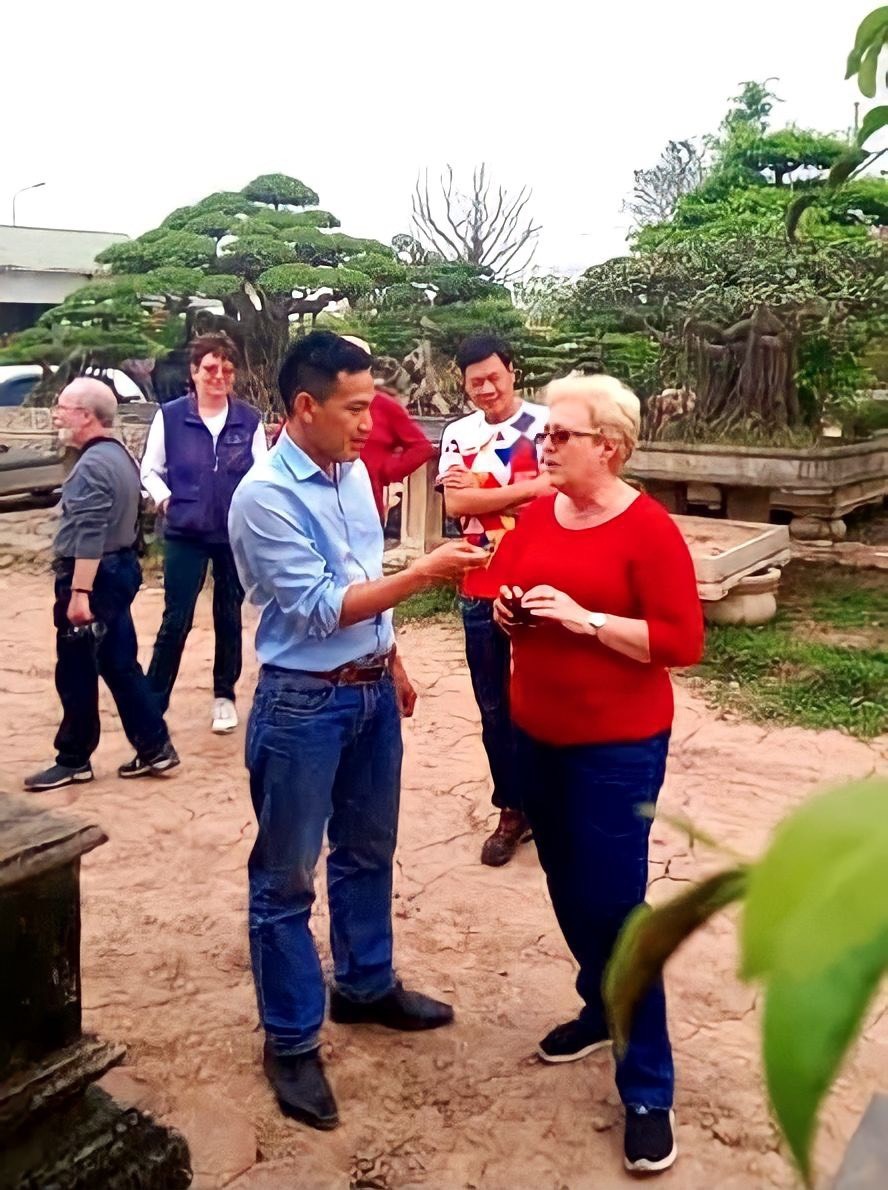
We should be proud of Vietnamese Bonsai
International bonsai artisans from Israel has attended Yen Tu Ornamental Plant Exhibition in 2018 and visited some large garden houses in Hanoi. On this occasion, journalist Quyet Tuan had a conversation in English with Willya, a member of the delegation. Nongthonvaphattrien.vn would like to translate the content of this conversation to the readers.

Quyet Tuan: Hello! I got to know that you had had a chance to visit Yen Tu Ornamental Plant Exhibition 2018 (Quang Ninh). Can you tell me about the exhibition?
Willya: I and the members of the delegation were very impressed with the works displayed there. They are awesome! The exhibition features a wide variety of works as well as prominent Bonsai schools in the world. I see this as an exhibition worthy of the region and the world. In our country, the indoor exhibitions only have a few dozen works that are often presented by pictures.
Quyet Tuan: I also feel that way. So after attending Yen Tu Ornamental Plant Exhibition and visiting some bonsai gardens of some artisans in Hanoi, what do you think about the ornamental bonsai of Vietnam?
Willya: You have made great strides in the art of international bonsai. In my country, people have come across many bonsai styles of Japan, China, South Korea, Thailand ... but all of them are very traditional. But here we come across an art of bonsai that is rich in emotion with a very own identity. I will try to bring Vietnamese-style works to enrich my collection. The world should know about Bonsai Vietnam just like knowing about the charming ao dai of this land. I love the systematic differences and deep ideas from Vietnamese bonsai artisans...
Quyet Tuan: What do you think when some people think that Vietnam needs to change its traditional Bonsai style to that of Japan, South Korea, China,etc. for catching up with the trend?
Willya: This is the trendy way of thinking, following the market. If you keep following others, you will never surpass them. Exchange is necessary but new differences create attraction. You can build a model of the Egyptian pyramid in your country. But you and your friends only come visit for once while in the long run you still desire to come to the true pyramid in its hometown. Culture is something that can not be imitated or copied. In your country, the ancient Northern roofs are the typical works. These are things that nobody can copy. You should stand and walk on your feet and give up the thought that you will catch up with others as you walk on their feet…
Quyet Tuan: I am very sorry for not knowing much about the background of Israel's ornamental plants. Could you please introduce me a bit?
Willya: Of course...! You're very welcome for showing interest. What could be more amazing? In our country, the appliance of science and technology is a key factor in changing the face of agricultural production in general and in bonsai in particular. The Bonsai schools of many countries in the world when entering our country have become professional through science and technology. You can see that the humidity measuring devices to the trimmers are also very automated. This is not good for the work of art ... Now you can see the basic difference of Vietnamese bonsai and Bonsai in many countries?
Quyet Tuan: Why not !? As you know, Vietnamese people are very serious in creating art, paying more attention to quality than the quantity with the main view of "Never too much of the good thing". You can see a one-string instrument, one-pillar pagoda, one-span bridge ... but for ornamental plants, people like "Life-time tree", with not too small size. This comes from the culture, we Vietnamese consider the tree is "the god of wood", spiritual cultural elements attached to life close to the mother nature, as gentle as the stream but fierce when angry. The ornamental plant art has been around for so long that nobody knows when. Over 800 years ago, there was a king who gave the land to Thai To Trung Tu to establish an area for raising flowers and plants in Thanh Nam, about 100 km south from Hanoi. Ornamental plants has become a work of art with the concept of heavenly teaching instilled by humans. It is a small cosmic harmony between Heaven - Earth - Humanity and is influenced by the philosophies of Confucianism, Taoism, Buddhism, Yin Yang and the Five Elements, etc. of the East. The root represents the origin; The body means the parents; The branch symbolizes the siblings; The flowers, chips, leaves, flowers, fruit symbolizes children, grandchildren ... So a work of aspirations of a pure Vietnamese family has the harmony between the parts to create the overall beauty . Together gather in the elements of "Showing the body, the leaves, reveal the core. Co - Linh - Tinh - Tu, the true beauty"...
Willya: It's so fascinating! We are s more practical, simpler, just mere simulation of nature, natural is very precious. On behalf of the delegation, I'd like to thank you for the interesting conversation today. We hope to see you again soon and discuss Bonsai art!
Quyet Tuan: The same to you! We wish you and your friends a wonderful day in our homeland.
Quyết Tuấn
Link nội dung: https://www.nongthonvaphattrien.vn/we-should-be-proud-of-vietnamese-bonsai-a4056.html